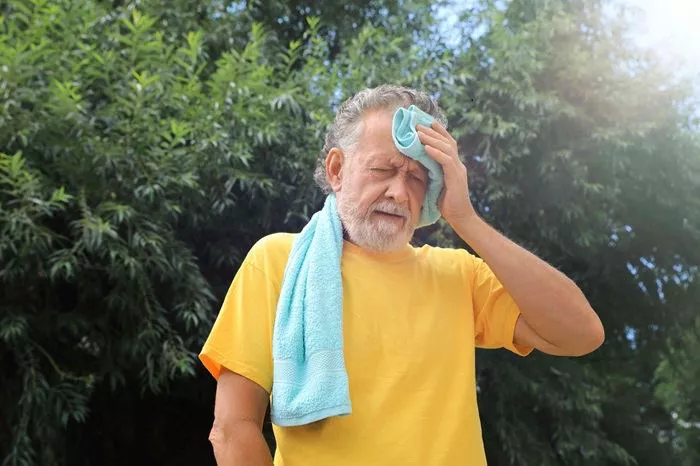Heat stroke is a severe condition that occurs when the body overheats, usually due to prolonged exposure to high temperatures or physical exertion in hot weather. It’s crucial to address heat stroke immediately to prevent serious complications or death. Here’s a detailed guide on recognizing and treating heat stroke.
Recognizing the symptoms of heat stroke is the first step. The primary signs include a core body temperature above 104°F (40°C), altered mental state or behavior such as confusion, agitation, slurred speech, irritability, delirium, seizures, or coma. The skin may feel hot and dry to the touch, though it can also be damp if heat stroke follows heat exhaustion. Other symptoms include nausea and vomiting, a rapid heartbeat, rapid breathing, and a throbbing headache.
Once you identify these symptoms, immediate action is necessary. Call emergency services right away. While waiting for help, move the person to a cooler environment. Ideally, bring them indoors where there is air conditioning. If this is not possible, find the nearest shaded area.
Cooling the body is critical. Remove any excess clothing to help the body cool down. You can use several methods to cool the person. Immersion in cool water is highly effective; place the person in a tub of cool water or a cool shower. If immersion is not possible, apply ice packs to the armpits, groin, neck, and back, as these areas are rich with blood vessels close to the skin, which can help cool the blood quickly. Wet towels soaked in cool water can also be placed on the person’s skin and refreshed frequently.
See Also: Dealing with Severe Sun Poisoning: A Comprehensive Guide
Another method is evaporative cooling. Use a fan to blow cool air while misting the person with cool water. This enhances evaporation and helps reduce body temperature effectively. If you have access to cooling blankets or sheets designed to lower body temperature, use them.
Hydration is also essential. If the person is conscious and able to drink, provide cool water or sports drinks to replenish fluids and electrolytes. Avoid caffeine or alcohol as they can worsen dehydration.
Monitor the person’s vital signs, including body temperature, breathing, and heart rate, until emergency services arrive. Once medical professionals take over, they will likely transport the person to a hospital for further treatment and observation. In the hospital, the patient may receive intravenous fluids to rehydrate and cool the body internally.
Post-treatment care involves monitoring for complications such as organ damage, which can occur due to prolonged high body temperature. This includes potential damage to the heart, kidneys, muscles, and brain. Rehydration is crucial; oral rehydration is preferred if the person can drink, but intravenous fluids may be necessary in severe cases.
Recovery from heat stroke requires rest and avoiding heat exposure for a period. Full recovery can take days to weeks, depending on the severity of the heat stroke. Follow-up medical visits may be necessary to ensure there are no lasting effects.
Preventing future heat stroke episodes is vital. Stay hydrated by drinking plenty of fluids, particularly water, throughout the day. During intense physical activity or exposure to high temperatures, increase fluid intake. Wear lightweight, loose-fitting, and light-colored clothing to help your body stay cool. Limit outdoor activities during the hottest parts of the day, typically between 10 a.m. and 4 p.m. Take regular breaks in a cool or shaded area if you must be outside. Use sunscreen to protect your skin from sunburn, which can interfere with the body’s ability to cool itself. Gradually increase your exposure to high temperatures over several days to allow your body to adapt. Be aware that certain medications can increase the risk of heat stroke; consult with your doctor about any medications you are taking.
Conclusion
In conclusion, heat stroke is a critical condition that requires immediate medical attention. Recognizing the symptoms and taking prompt action can save lives. By understanding how to treat heat stroke and taking preventive measures, you can protect yourself and others from this dangerous condition.
FAQs
How can I differentiate between heat exhaustion and heat stroke? Heat exhaustion includes heavy sweating, weakness, dizziness, nausea, muscle cramps, and cool, moist skin. Heat stroke involves a body temperature above 104°F, altered mental state, rapid heartbeat, and hot, dry skin. Heat stroke is a medical emergency.
Can heat stroke occur indoors? Yes, heat stroke can occur indoors, especially in poorly ventilated or extremely hot environments. It is essential to stay cool and hydrated even when indoors during high temperatures.
How long does it take to recover from heat stroke? Recovery time varies. With prompt treatment, initial improvement can be seen within 30 minutes to an hour. However, full recovery may take days to weeks, depending on the severity of the heat stroke. Rest and hydration are key.
Related topics:
- What Are 6 Signs of Heat Exhaustion?
- Heat Stroke: Recognizing Symptoms & Providing First Aid
- Understanding Heat Exhaustion & Diarrhea


